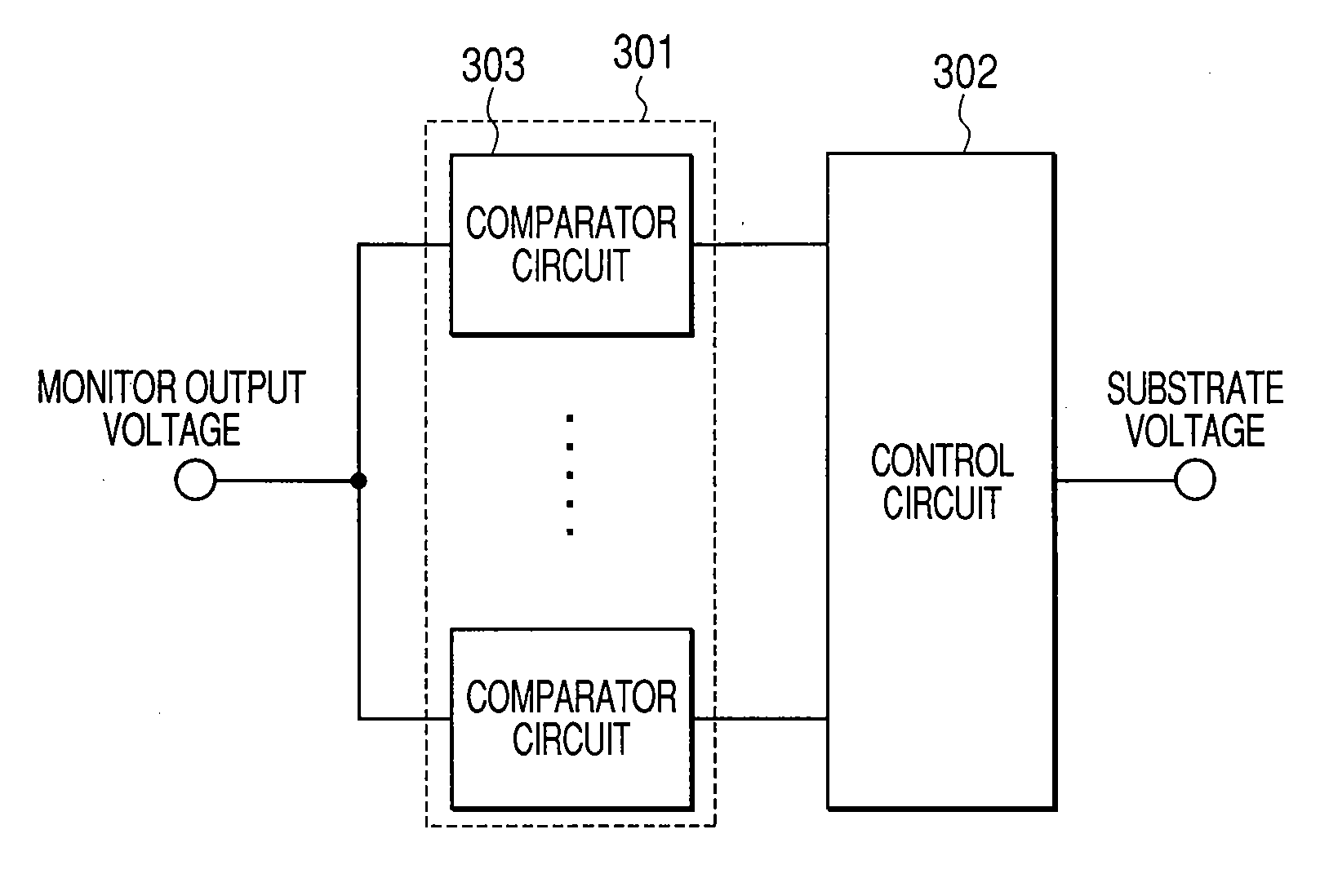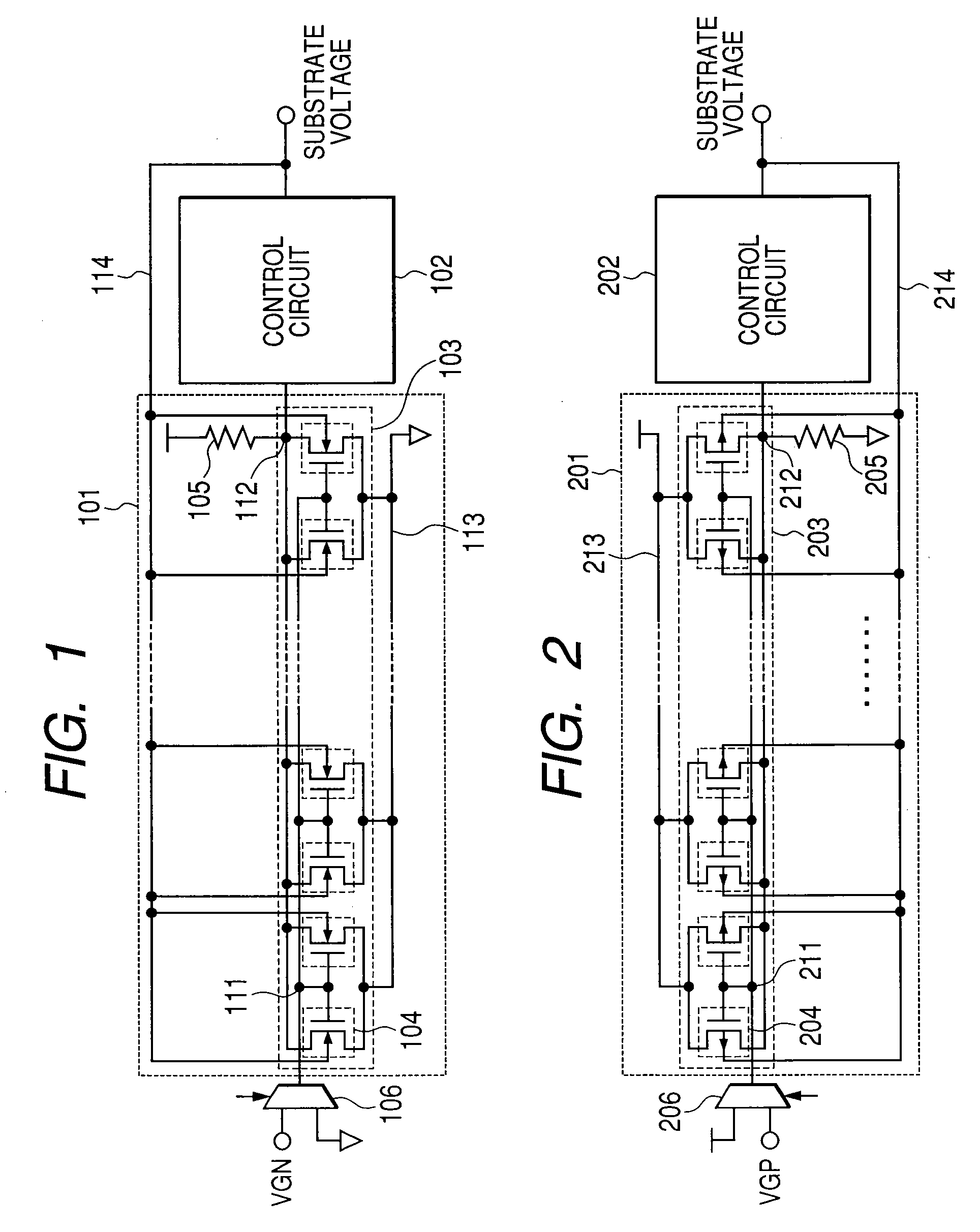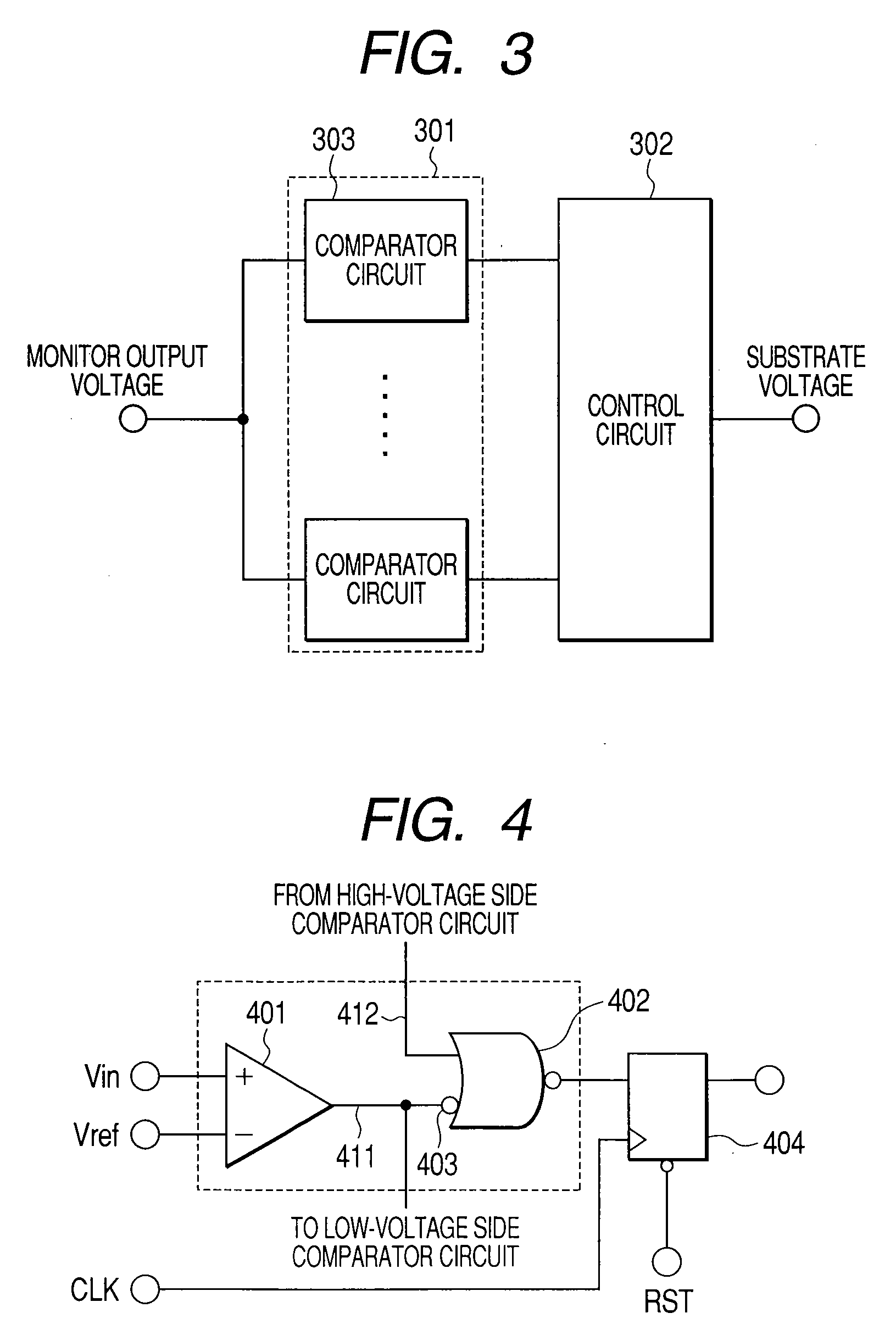Semiconductor device
a technology of mikro-mos transistors and transistors, applied in pulse generators, instruments, pulse techniques, etc., can solve the problems of inability to grasp the variation in the threshold voltage of the transistor by one replica mos transistor, broken dram operation, and inability to control threshold voltage precision, etc., to reduce power consumption and suppress the effect of sense speed
- Summary
- Abstract
- Description
- Claims
- Application Information
AI Technical Summary
Benefits of technology
Problems solved by technology
Method used
Image
Examples
first embodiment
[0050]Hereinafter, a semiconductor device according to one embodiment of the present invention will be described with reference to FIGS. 1 to 5.
[0051]FIG. 1 is a block diagram showing an entire NMOS transistor substrate control circuit. The NMOS transistor substrate control circuit is roughly classified into two circuits. One circuit is a sense amplifier NMOS transistor threshold voltage monitoring circuit 101, and another circuit is a control circuit 102.
[0052]The NMOS transistor threshold voltage monitoring circuit 101 includes a replica NMOS transistor array 103 and a resistor 105. The replica NMOS transistor array 103 is composed of plural replica NMOS transistors 104. All gate terminals of those plural replica NMOS transistors 104 are connected to a node 111, all drain terminals thereof are connected to a node 112, all source terminals thereof are connected to a node 113, and all substrates are connected to a node 114. The node 111 is input with a gate input voltage VGN. The ga...
second embodiment
[0089]FIG. 14 is a diagram showing the entire block of a semiconductor device according to another embodiment of the present invention. A difference from the first embodiment resides in that variation control circuits 153 and 154 are added. The variation control circuits detect variations in the threshold voltages of the sense amplifier NMOS / PMOS transistors within the chip according to the outputs from the entire NMOS (PMOS) substrate control blocks (sense amplifier NMOS / PMOS transistor threshold voltage monitoring circuits 151 and the control circuits 152) shown in FIGS. 1 and 2, which are disposed in plurality within the DRAM chip, and control the substrate voltage of the entire chip to control the threshold voltages. As a result, it is possible to adjust the sense speed at an optimum speed, and it is possible to reduce the power consumption. The sense amplifier NMOS / PMOS transistor threshold voltage monitoring circuit 151 shown in FIG. 14 which will be described later is substan...
PUM
 Login to View More
Login to View More Abstract
Description
Claims
Application Information
 Login to View More
Login to View More - R&D
- Intellectual Property
- Life Sciences
- Materials
- Tech Scout
- Unparalleled Data Quality
- Higher Quality Content
- 60% Fewer Hallucinations
Browse by: Latest US Patents, China's latest patents, Technical Efficacy Thesaurus, Application Domain, Technology Topic, Popular Technical Reports.
© 2025 PatSnap. All rights reserved.Legal|Privacy policy|Modern Slavery Act Transparency Statement|Sitemap|About US| Contact US: help@patsnap.com



